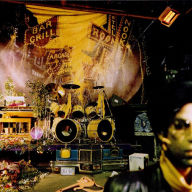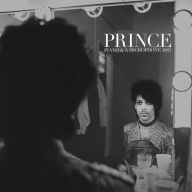Your Soundtrack to Prince’s The Beautiful Ones
The night that Prince died, I went for a walk through my neighborhood in Minneapolis, the city of his birth. It was late April—a time when, Prince once sang, snow might still surprise—but it was a perfectly beautiful evening. There were people on porches and congregated in alleys, and I could hear Prince’s music coming from everywhere, the soundtrack of my movement through a place suddenly, inexplicably without of one of its fiercest and most vital voices. My neighbors were filling up this unfathomable loss with what he’d left behind: his music.
The Beautiful Ones
The Beautiful Ones
By Prince
In Stock Online
Hardcover $32.00
Three months before his death, Prince met with publishers about producing his memoir, to be called The Beautiful Ones after one of his complicated love songs. He chose Dan Piepenbring as his co-writer in a project envisioned to surprise, provoke, and motivate. “The book would allow him to seize the narrative of his own life,” Piepenbring wrote. It would center Prince in his own story. The book was to be something new and surprising: an autobiography that pulled lessons from Prince’s lived experience that would illuminate issues in the world—race and class; art and the business of making it—and do so not just in words, but in pictures, the records of conversations, and a catalog of the ephemera of Prince’s life, covering the period from his birth to his iconic Superbowl concert in 2007.
Prince’s untimely death left the project unfinished, the text limited to several dozen pages now augmented with countless rare images and objects from the Artist’s life and times. These are essential artifacts: consider the scan of a paper bag with the lyrics to “Do Me, Baby” scrawled on it; Prince had a tendency to write on whatever was at hand, a palimpsest of prose against the prosaic. (This is a habit he shares with other American poets: The Gorgeous Nothings records Emily Dickinson’s poems written on envelopes.) The thing missing in this memoir and retrospective, then, is Prince’s music, the very thing we turned to when he died. Here are 10 albums to serve as your soundtrack to The Beautiful Ones.
Three months before his death, Prince met with publishers about producing his memoir, to be called The Beautiful Ones after one of his complicated love songs. He chose Dan Piepenbring as his co-writer in a project envisioned to surprise, provoke, and motivate. “The book would allow him to seize the narrative of his own life,” Piepenbring wrote. It would center Prince in his own story. The book was to be something new and surprising: an autobiography that pulled lessons from Prince’s lived experience that would illuminate issues in the world—race and class; art and the business of making it—and do so not just in words, but in pictures, the records of conversations, and a catalog of the ephemera of Prince’s life, covering the period from his birth to his iconic Superbowl concert in 2007.
Prince’s untimely death left the project unfinished, the text limited to several dozen pages now augmented with countless rare images and objects from the Artist’s life and times. These are essential artifacts: consider the scan of a paper bag with the lyrics to “Do Me, Baby” scrawled on it; Prince had a tendency to write on whatever was at hand, a palimpsest of prose against the prosaic. (This is a habit he shares with other American poets: The Gorgeous Nothings records Emily Dickinson’s poems written on envelopes.) The thing missing in this memoir and retrospective, then, is Prince’s music, the very thing we turned to when he died. Here are 10 albums to serve as your soundtrack to The Beautiful Ones.
Prince [LP]
Prince [LP]
Artist Prince
In Stock Online
Vinyl LP $34.99
Prince (1979)
Though self-titled, Prince isn’t Prince’s first album; that was For You, released a year earlier, in 1978. Both albums are synthesizer-heavy, sung almost completely in Prince’s signature falsetto. His chunky guitar, which will be so characteristic of the “Minneapolis Sound” when it comes together just a few years later, isn’t really present; this is music worked out on a piano, something which Prince will come back around to only later. “I’m sick of playing the guitar, at least for now. I like the piano, but I hate the thought of picking up the guitar,” he told Piepenbring at their first meeting.
Notable cover: Chaka Khan recorded a rendition of “I Feel for You” in 1984, the same year Prince’s Purple Rain dropped.
Prince (1979)
Though self-titled, Prince isn’t Prince’s first album; that was For You, released a year earlier, in 1978. Both albums are synthesizer-heavy, sung almost completely in Prince’s signature falsetto. His chunky guitar, which will be so characteristic of the “Minneapolis Sound” when it comes together just a few years later, isn’t really present; this is music worked out on a piano, something which Prince will come back around to only later. “I’m sick of playing the guitar, at least for now. I like the piano, but I hate the thought of picking up the guitar,” he told Piepenbring at their first meeting.
Notable cover: Chaka Khan recorded a rendition of “I Feel for You” in 1984, the same year Prince’s Purple Rain dropped.
Dirty Mind
Dirty Mind
Artist Prince
In Stock Online
Vinyl LP $33.99
Dirty Mind (1980)
For You and Prince are often dreamy and romantic, laced with a gauzy sexuality. The only song to chart from the former was “Soft and Wet,” a funky but courteous seduction; even the album cover is in soft focus. Dirty Mind strikes a drastically different tone. The cover is stark black and white. Prince poses before the springs and structure of a mattress, wearing a studded jacket, a bandana around his neck, black underwear, and nothing else. A pin on the jacket reads “rude boy.” The photo is raunchy and direct, a perfect wrapper on the album. In Dirty Mind, Prince messes with gender, sexuality, culture, and history in weirdly peppy, upbeat three-minute pop songs. One would think that a song titled “Sexuality” would be dirty, but instead its lyrics call out issues of race in America. (“We don’t need no segregation, we don’t need no race/New age revelation, I think we got a case.”) A case could be made that in 1980s America, this stuff was dirtier than sex. Dirty Mind shows Prince beginning to play with both image and music, an effort that will bloom into full flower in Purple Rain.
Notable cover: Cyndi Lauper retools “When You Were Mine” for her debut album, She’s So Unusual, as pure New Wave.
Dirty Mind (1980)
For You and Prince are often dreamy and romantic, laced with a gauzy sexuality. The only song to chart from the former was “Soft and Wet,” a funky but courteous seduction; even the album cover is in soft focus. Dirty Mind strikes a drastically different tone. The cover is stark black and white. Prince poses before the springs and structure of a mattress, wearing a studded jacket, a bandana around his neck, black underwear, and nothing else. A pin on the jacket reads “rude boy.” The photo is raunchy and direct, a perfect wrapper on the album. In Dirty Mind, Prince messes with gender, sexuality, culture, and history in weirdly peppy, upbeat three-minute pop songs. One would think that a song titled “Sexuality” would be dirty, but instead its lyrics call out issues of race in America. (“We don’t need no segregation, we don’t need no race/New age revelation, I think we got a case.”) A case could be made that in 1980s America, this stuff was dirtier than sex. Dirty Mind shows Prince beginning to play with both image and music, an effort that will bloom into full flower in Purple Rain.
Notable cover: Cyndi Lauper retools “When You Were Mine” for her debut album, She’s So Unusual, as pure New Wave.
Controversy
Controversy
Artist Prince
In Stock Online
Vinyl LP
$31.49
$34.99
Controversy (1981)
I just can’t believe all the things people say
Controversy
Am I black or white, am I straight or gay?
Controversy
Do I believe in god, do I believe in me?
After the success of Dirty Mind, Prince begins to clap back at the speculations about him. He always courted ambiguity, and here he really begins to play it up. He also explores issues in ways more overtly political—not just positioning sex as liberation, your typical dance track hedonism—to mixed results. “Ronnie Talk to Russia” is part of an embarrassing collection of ’80s songs tackling denuclearization (Sting’s cringe-worthy “Russians” being an exemplar of the form). But “Annie Christian” has a strange poetry to it, mixing imagery of the Atlanta Church bombings and John Lennon’s assassination into a story of a woman named Annie Christian. Full advantage is taken of the allusive possibilities of such a moniker, and the track offers no easy interpretations. It almost reminds me of fellow Minnesota native son Bob Dylan’s rambling biographical songs.
Controversy (1981)
I just can’t believe all the things people say
Controversy
Am I black or white, am I straight or gay?
Controversy
Do I believe in god, do I believe in me?
After the success of Dirty Mind, Prince begins to clap back at the speculations about him. He always courted ambiguity, and here he really begins to play it up. He also explores issues in ways more overtly political—not just positioning sex as liberation, your typical dance track hedonism—to mixed results. “Ronnie Talk to Russia” is part of an embarrassing collection of ’80s songs tackling denuclearization (Sting’s cringe-worthy “Russians” being an exemplar of the form). But “Annie Christian” has a strange poetry to it, mixing imagery of the Atlanta Church bombings and John Lennon’s assassination into a story of a woman named Annie Christian. Full advantage is taken of the allusive possibilities of such a moniker, and the track offers no easy interpretations. It almost reminds me of fellow Minnesota native son Bob Dylan’s rambling biographical songs.
1999 [2019 Remaster]
1999 [2019 Remaster]
Artist Prince
Vinyl LP $34.99
1999 (1982)
Starting in 1979, Prince began experimenting with a backup band. Over the next few years, the lineup changed often. Some personnel changes were due to religious convictions, as members left to pursue spiritual callings, as well as the usual sort of personal and creative conflicts that are hard to parse from the outside. Though 1999 doesn’t officially count as the first Prince and the Revolution album—that will be Purple Rain—it sits right there on the cusp of becoming. The words “and the Revolution” are even visible on the cover, written backwards and superimposed over the “I” in Prince. Other than the replacement of Dez Dickerson by Wendy Melvoin, the Revolution lineup is intact. Moreover, Prince begins to sound like Prince. Maybe it’s the backing of a group of talented musicians, maybe it’s inevitable evolution; either way, it all begins to come together on 1999. This is the first Prince album I remember really getting into, poring over the lyrics and acknowledgements on the backs of the two slipcases. Though Controversy was the first album incorporating Prince’s signature sensational spelling —U for you, 2 for to—because it didn’t have a lyric sheet, the effect was blunted. 1999 includes complete lyrics, and I was mesmerized.
1999 (1982)
Starting in 1979, Prince began experimenting with a backup band. Over the next few years, the lineup changed often. Some personnel changes were due to religious convictions, as members left to pursue spiritual callings, as well as the usual sort of personal and creative conflicts that are hard to parse from the outside. Though 1999 doesn’t officially count as the first Prince and the Revolution album—that will be Purple Rain—it sits right there on the cusp of becoming. The words “and the Revolution” are even visible on the cover, written backwards and superimposed over the “I” in Prince. Other than the replacement of Dez Dickerson by Wendy Melvoin, the Revolution lineup is intact. Moreover, Prince begins to sound like Prince. Maybe it’s the backing of a group of talented musicians, maybe it’s inevitable evolution; either way, it all begins to come together on 1999. This is the first Prince album I remember really getting into, poring over the lyrics and acknowledgements on the backs of the two slipcases. Though Controversy was the first album incorporating Prince’s signature sensational spelling —U for you, 2 for to—because it didn’t have a lyric sheet, the effect was blunted. 1999 includes complete lyrics, and I was mesmerized.
Purple Rain
Purple Rain
Artist Prince , Prince and the Revolution
In Stock Online
Vinyl LP $26.99
Purple Rain (1984)
Everything comes together in Purple Rain: Prince’s self-mythologizing and eye for the dramatic, all riding on a personal musical style that has synthesized into something unique. The acting and the writing in Purple Rain, the film, is hokey and amateurish, but the concert sequences, which constitute a sizable amount of the running time, are electric. The song that gives his memoir its title, “The Beautiful Ones,” is performed in the movie after Prince has started wooing the fair Apollonia; his rival for her affections is Morris Day. Prince plays the song after Morris makes his pitch. Apollonia’s reaction shots say everything. He swings from seduction to accusations and despair, ending prone on the stage and screaming. She’s not a great actress, but she really hits her marks here. There’s almost too much to say about Purple Rain, the film and soundtrack that launched Prince into superstardom. I saw the movie when I was 10 years old, in a seedy theater in downtown Minneapolis. I was already a fan, so I convinced my indulgent fathr to take me to the R-rated concert film. It is one of my favorite memories, and I am positively vibrating with excitement to listen to the album as I read what Prince had to say about its genesis.
Purple Rain (1984)
Everything comes together in Purple Rain: Prince’s self-mythologizing and eye for the dramatic, all riding on a personal musical style that has synthesized into something unique. The acting and the writing in Purple Rain, the film, is hokey and amateurish, but the concert sequences, which constitute a sizable amount of the running time, are electric. The song that gives his memoir its title, “The Beautiful Ones,” is performed in the movie after Prince has started wooing the fair Apollonia; his rival for her affections is Morris Day. Prince plays the song after Morris makes his pitch. Apollonia’s reaction shots say everything. He swings from seduction to accusations and despair, ending prone on the stage and screaming. She’s not a great actress, but she really hits her marks here. There’s almost too much to say about Purple Rain, the film and soundtrack that launched Prince into superstardom. I saw the movie when I was 10 years old, in a seedy theater in downtown Minneapolis. I was already a fan, so I convinced my indulgent fathr to take me to the R-rated concert film. It is one of my favorite memories, and I am positively vibrating with excitement to listen to the album as I read what Prince had to say about its genesis.
Ice Cream Castle [Neopalitan Pink/White/Brown Vinyl]
Ice Cream Castle [Neopalitan Pink/White/Brown Vinyl]
Primary Artist The Time
Vinyl LP $19.99
Ice Cream Castle, The Time (1984)
This album, released concurrently with Purple Rain and including several songs from the film, stands on this list as more of placeholder for all of the artists Prince worked with over the years, particularly during this especially fertile period in his career. Both tracks from the movie—”The Bird” and “Jungle Love”—are dance numbers that positively slap. (I pledge allegiance to the Time, indeed.) This album and Sheila E’s The Glamorous Life have shown the most staying power of any of the Purple Rain-era Prince disciples, probably because they’re all standout musicians in their own right. Albums from Vanity 6—and the reconstituted Apollonia 6, after Vanity and Prince parted ways—are well out of print these days, which is almost a shame, as they are so charmingly inept.
In addition to the Purple Rain adjacent albums, Prince penned a variety of songs for other people (or which were performed by others, but which he never recorded himself): The Bangles’ “Manic Monday,” Sinead O’Connor’s “Nothing Compares 2 U,” Sheena Easton’s “Sugar Walls,” Stevie Nicks’ “Stand Back,” and many, many others.
Ice Cream Castle, The Time (1984)
This album, released concurrently with Purple Rain and including several songs from the film, stands on this list as more of placeholder for all of the artists Prince worked with over the years, particularly during this especially fertile period in his career. Both tracks from the movie—”The Bird” and “Jungle Love”—are dance numbers that positively slap. (I pledge allegiance to the Time, indeed.) This album and Sheila E’s The Glamorous Life have shown the most staying power of any of the Purple Rain-era Prince disciples, probably because they’re all standout musicians in their own right. Albums from Vanity 6—and the reconstituted Apollonia 6, after Vanity and Prince parted ways—are well out of print these days, which is almost a shame, as they are so charmingly inept.
In addition to the Purple Rain adjacent albums, Prince penned a variety of songs for other people (or which were performed by others, but which he never recorded himself): The Bangles’ “Manic Monday,” Sinead O’Connor’s “Nothing Compares 2 U,” Sheena Easton’s “Sugar Walls,” Stevie Nicks’ “Stand Back,” and many, many others.
The Hits/The B-Sides
The Hits/The B-Sides
Artist Prince
In Stock Online
CD $23.99
The B-Sides (1993)
It doesn’t necessarily feel like it was released that long ago, but given the subsequent upheavals in recording technology—tapes to CDs to mp3s to streaming—I should probably explain what a b-side is. Prince released a lot of singles: 45 rpm records highlighting a standout song like “When Doves Cry” or “Let’s Go Crazy.” The other side of the record—the b-side—would feature a previously unreleased track. Maybe it was perversity, maybe it was Easter eggs for the faithful, but many of the songs Prince relegated to the b-side were astonishingly good. “17 Days,” the b-side of “When Doves Cry,” counts the days after the loss of a lover. It’s in the same vein as “Nothing Compares 2 U,” but the music is peppier, an ironic contrast with the sentiment. “Erotic City,” the b-side of “Let’s Go Crazy,” is perfect sexy funk. It has received a fair amount of airplay, despite ambiguity as to whether Prince was saying “funk” or the other f-word.
The B-Sides (1993)
It doesn’t necessarily feel like it was released that long ago, but given the subsequent upheavals in recording technology—tapes to CDs to mp3s to streaming—I should probably explain what a b-side is. Prince released a lot of singles: 45 rpm records highlighting a standout song like “When Doves Cry” or “Let’s Go Crazy.” The other side of the record—the b-side—would feature a previously unreleased track. Maybe it was perversity, maybe it was Easter eggs for the faithful, but many of the songs Prince relegated to the b-side were astonishingly good. “17 Days,” the b-side of “When Doves Cry,” counts the days after the loss of a lover. It’s in the same vein as “Nothing Compares 2 U,” but the music is peppier, an ironic contrast with the sentiment. “Erotic City,” the b-side of “Let’s Go Crazy,” is perfect sexy funk. It has received a fair amount of airplay, despite ambiguity as to whether Prince was saying “funk” or the other f-word.
Parade [Music From the Motion Picture Under the Cherry Moon]
Parade [Music From the Motion Picture Under the Cherry Moon]
Artist Prince , Prince and the Revolution
In Stock Online
Vinyl LP $26.99
Parade (1986)
Though The Beautiful Ones only covers the period up to Purple Rain, this list strikes past that period; Prince had much more to say before his untimely death. Parade is the soundtrack to Prince’s second movie, Under the Cherry Moon, which is deliriously, perfectly bad. (I have no idea why the album is called Parade, and not Under the Cherry Moon.) Shot in black in white, Under the Cherry Moon tells the story of the doomed romance between high class gigolo Christopher Tracy (played by Prince) and spoiled heiress Mary Sharon (played by Kristin Scott Thomas, in her film debut). It features one of the most self-indulgent death scenes of all time.
But weirdly, the album is excellent: in particular, “Sometimes It Snows in April” is an achingly lovely ballad, and evokes all the emotions the movie fails to. Which is not to say that I don’t love the film inordinately; I can quote you so much dialogue from myriad viewings in my misspent youth.
Prince would continue to be drawn to cinema through his career. The less said about Graffiti Bridge—the sequel to Purple Rain, and major fiasco—the better, but his contributions to a couple soundtracks, including Tim Burton’s Batman and Spike Lee’s Girl 6, are both perfectly respectable albums. On the Batman soundtrack especially, the dualities and dialectics suggested by the source material dovetail with prevalent themes in Prince’s work.
Parade (1986)
Though The Beautiful Ones only covers the period up to Purple Rain, this list strikes past that period; Prince had much more to say before his untimely death. Parade is the soundtrack to Prince’s second movie, Under the Cherry Moon, which is deliriously, perfectly bad. (I have no idea why the album is called Parade, and not Under the Cherry Moon.) Shot in black in white, Under the Cherry Moon tells the story of the doomed romance between high class gigolo Christopher Tracy (played by Prince) and spoiled heiress Mary Sharon (played by Kristin Scott Thomas, in her film debut). It features one of the most self-indulgent death scenes of all time.
But weirdly, the album is excellent: in particular, “Sometimes It Snows in April” is an achingly lovely ballad, and evokes all the emotions the movie fails to. Which is not to say that I don’t love the film inordinately; I can quote you so much dialogue from myriad viewings in my misspent youth.
Prince would continue to be drawn to cinema through his career. The less said about Graffiti Bridge—the sequel to Purple Rain, and major fiasco—the better, but his contributions to a couple soundtracks, including Tim Burton’s Batman and Spike Lee’s Girl 6, are both perfectly respectable albums. On the Batman soundtrack especially, the dualities and dialectics suggested by the source material dovetail with prevalent themes in Prince’s work.
Sign 'O' the Times
Sign 'O' the Times
Artist Prince
Vinyl LP $24.99
Sign ‘O’ the Times (1987)
After spending a couple albums deep in the weeds, Prince comes back to it in Sign ‘O’ the Times. This album is his most multi-faceted to date, with everything from slamming dance numbers like “Housequake,” to shattering love songs like “Adore,” to the hard to characterize “Ballad of Dorothy Parker.” (My kids don’t have much patience with their mother’s love of Prince, but they both love “Starfish and Coffee,” which he performed on Sesame Street.) The album also includes his first song recorded at a live show, “It’s Gonna Be a Beautiful Night.” The liner notes credit the backup singers as members of the band along with “6000 Wonderful Parisians.” Prince’s music had a global impact—a fact that became apparent after his death, as monuments as far flung as the Eiffel Tower in France, the Melbourne Arts Centre in Australia, and Niagara Falls in Canada were bathed in purple light in memoriam.
Sign ‘O’ the Times (1987)
After spending a couple albums deep in the weeds, Prince comes back to it in Sign ‘O’ the Times. This album is his most multi-faceted to date, with everything from slamming dance numbers like “Housequake,” to shattering love songs like “Adore,” to the hard to characterize “Ballad of Dorothy Parker.” (My kids don’t have much patience with their mother’s love of Prince, but they both love “Starfish and Coffee,” which he performed on Sesame Street.) The album also includes his first song recorded at a live show, “It’s Gonna Be a Beautiful Night.” The liner notes credit the backup singers as members of the band along with “6000 Wonderful Parisians.” Prince’s music had a global impact—a fact that became apparent after his death, as monuments as far flung as the Eiffel Tower in France, the Melbourne Arts Centre in Australia, and Niagara Falls in Canada were bathed in purple light in memoriam.
Piano & A Microphone 1983
Piano & A Microphone 1983
Artist Prince
In Stock Online
Vinyl LP $26.99
Piano & a Microphone 1983 (2018)
Piano & a Microphone 1983 is the first Prince album released posthumously. It consists of a demo album produced in a single take, found on a cassette in Prince’s Vault, and includes five previously unreleased songs. It gives us a small glimpse into Prince’s creative process; he tries things out, remixes, and samples. Some of the songs wouldn’t find their way onto an album for years. Due to unfortunate circumstance, much of The Beautiful Ones had to be assembled from archival materials, which makes this a fitting choice to end this list. I’m sure we can expect more recordings like Piano & a Microphone 1983, as the voluminous contents of his vault are vetted and remastered. But we’re not going to get anything else like The Beautiful Ones, which includes his most recent thoughts and impressions of some of his most important works. He’ll never write anything new again, and I still can’t quite believe it.
Prince’s The Beautiful Ones is available on October 29.
Piano & a Microphone 1983 (2018)
Piano & a Microphone 1983 is the first Prince album released posthumously. It consists of a demo album produced in a single take, found on a cassette in Prince’s Vault, and includes five previously unreleased songs. It gives us a small glimpse into Prince’s creative process; he tries things out, remixes, and samples. Some of the songs wouldn’t find their way onto an album for years. Due to unfortunate circumstance, much of The Beautiful Ones had to be assembled from archival materials, which makes this a fitting choice to end this list. I’m sure we can expect more recordings like Piano & a Microphone 1983, as the voluminous contents of his vault are vetted and remastered. But we’re not going to get anything else like The Beautiful Ones, which includes his most recent thoughts and impressions of some of his most important works. He’ll never write anything new again, and I still can’t quite believe it.
Prince’s The Beautiful Ones is available on October 29.
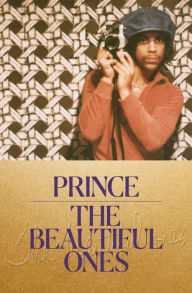
![Prince [LP]](https://prodimage.images-bn.com/pimages/0093624922087_p0_v1_s192x300.jpg)
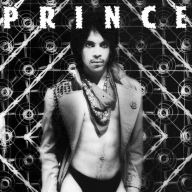

![1999 [2019 Remaster]](https://prodimage.images-bn.com/pimages/0603497849987_p0_v2_s192x300.jpg)
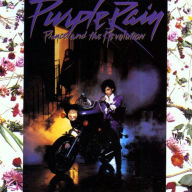
![Ice Cream Castle [Neopalitan Pink/White/Brown Vinyl]](https://prodimage.images-bn.com/pimages/0603497860715_p0_v1_s192x300.jpg)
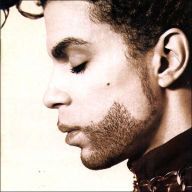
![Parade [Music From the Motion Picture Under the Cherry Moon]](https://prodimage.images-bn.com/pimages/0075992539517_p0_v2_s192x300.jpg)
